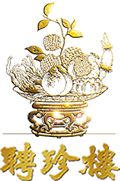Hotel New Grand
Art Deco architecture in JapanCompanies based in YokohamaHotel buildings completed in 1927Hotel buildings completed in 1991Hotels established in 1927 ... and 3 more
Hotels in YokohamaJapanese building and structure stubsPreferred Hotels & Resorts

The Hotel New Grand (ホテルニューグランド) (JASDAQ: 9720) is a historic hotel in Yokohama, Japan, overlooking Yamashita Park. It opened in 1927, four years after the Great Kantō earthquake devastated much of the city. The hotel was used as accommodation by American troops during the occupation of Japan following World War II; one of the hotel suites is set aside and maintained just as it was furnished when General Douglas MacArthur stayed there, his first night in Japan during the occupation. The hotel is believed to be the place where the famous yoshoku dish naporitan was invented by a head chef. In 1991, an eighteen-story tower was built as an expansion of the hotel.
Excerpt from the Wikipedia article Hotel New Grand (License: CC BY-SA 3.0, Authors, Images).Hotel New Grand
Mizumachi-dori Street, Yokohama Naka Ward
Geographical coordinates (GPS) Address Nearby Places Show on map
Geographical coordinates (GPS)
| Latitude | Longitude |
|---|---|
| N 35.444773 ° | E 139.649593 ° |
Address
Mizumachi-dori Street
231-0017 Yokohama, Naka Ward
Japan
Open on Google Maps











